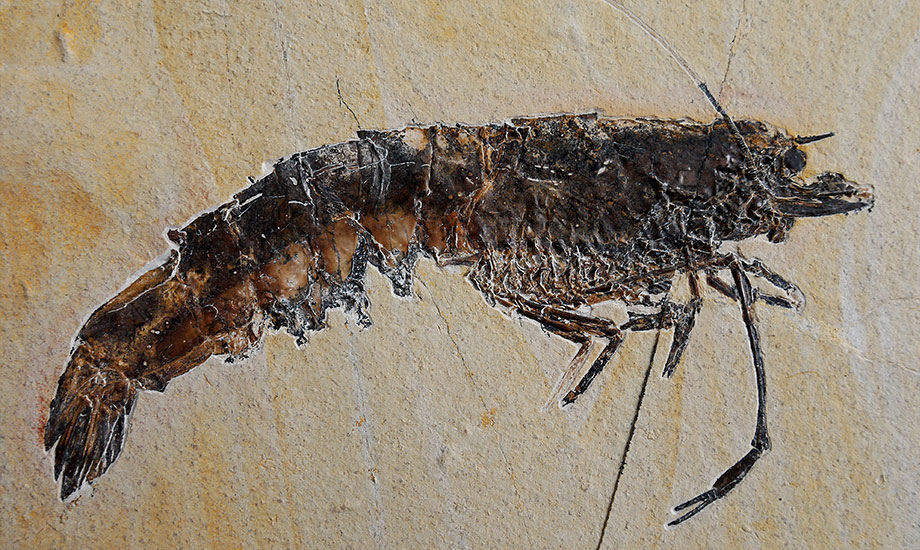Tropical lagoons and pieces of a puzzle
In the southwest of the Swabian Alb, near Nusplingen, a rare geological treasure from the Jurassic Sea has been preserved: The Nusplingen platy limestones. They are deposited in regular layers only a few centimetres thick. Each layer represents the seabed at a particular time including the animals that died and sank to the bottom.
The breathtakingly detailed preservation of the fossils is due to a combination of favourable deposition conditions: The fine calcareous mud, which traced the most filigree structures, and the lack of oxygen, which hindered the decomposition of the organic material. In addition, there was hardly any water movement on the seabed, so that even piles of faeces and traces of movement remained in the mud. This is why the Nusplingen platy limestones with their extraordinary wealth of fossils are so valuable for scientific research and world-famous.
Like a journey back in time, the research results bring to life the landscape and the animal and plant world of the Upper Jurassic around 150 million years ago! In the area of today's Nusplingen, a deep tropical lagoon of about 1.5 kilometres in size stretched out. It was the habitat of animals like ammonites, shrimps, crabs, marine crocodiles and fish, such as the shark-like "sea angels" or coelacanths. Ferns and conifers grew on islands, insects the fifteen-centimetre giant dragonflies buzzed above the surface of the water, and pterosaurs hovered in the sky...
Every find contributes a small piece to the history puzzle of a place - and sometimes to the understanding of Earth's history. Tiny finds can provide important insights - as a feather measuring only eight millimetres that was found here in 2009. It is possibly the oldest preserved feather in the world and comes from a dinosaur.
Unfortunately, a specific fossil loses its interpretative significance and scientific value once it is taken out of the context of its exact find situation. Like a single piece of a puzzle that happens to be found in a drawer years later, after the puzzle has already been lost. Random discoveries of unusual fossils along the hiking trail should therefore be reported to the Stuttgart Natural History Museum. Our picture gallery shows finds from Nusplingen. They can be used for comparison and as an identification aid.
-
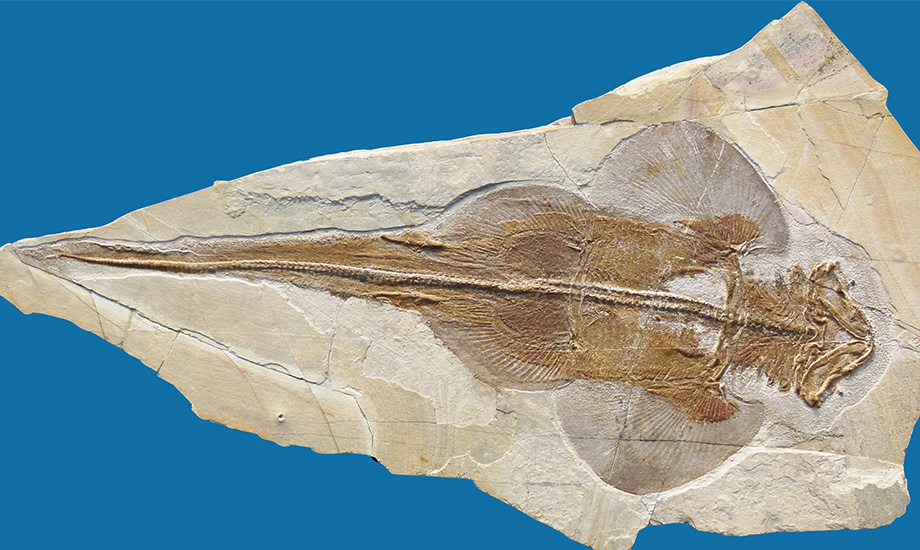 Tropical lagoons and pieces of a puzzle
Tropical lagoons and pieces of a puzzle -
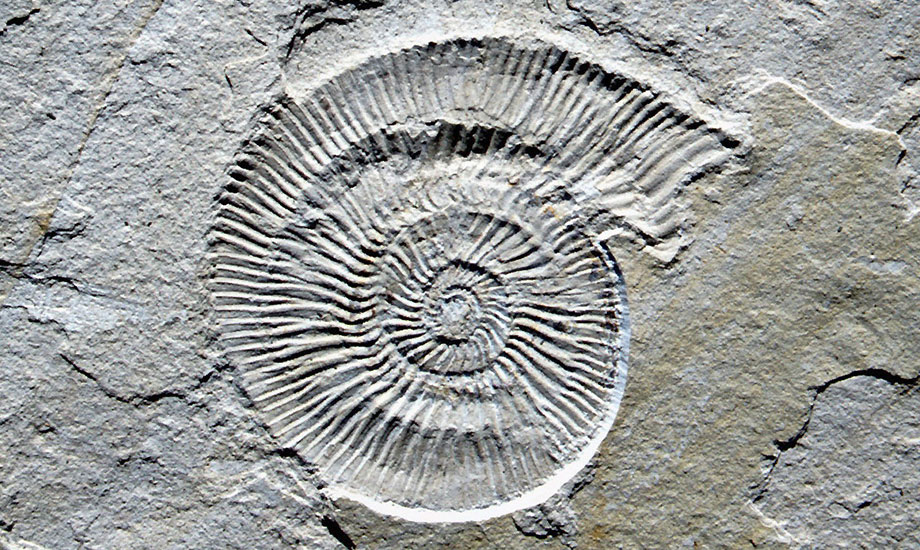 © Annette Schmid-RöhlAmmonite (Silicisphinctes)
© Annette Schmid-RöhlAmmonite (Silicisphinctes) -
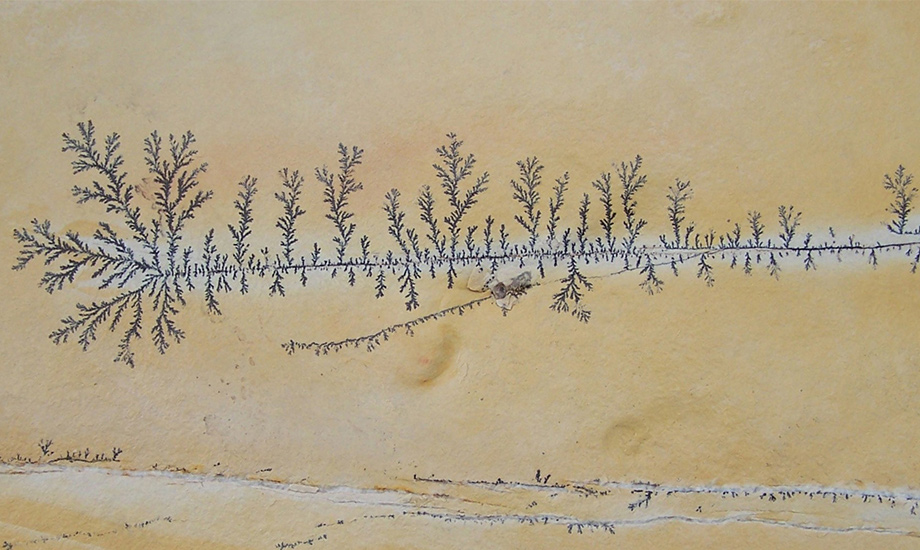 © Günter SchweigertFinely branched mineral efflorescences (dendrites). These formations are not fossils.
© Günter SchweigertFinely branched mineral efflorescences (dendrites). These formations are not fossils. -
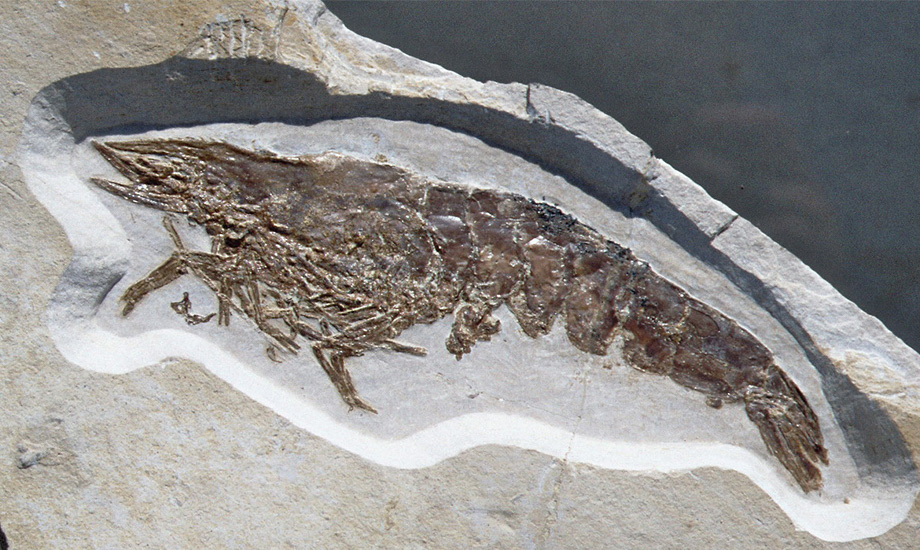 © Günter SchweigertShrimp (Antrimpos) - all finds of crustaceans must be reported.
© Günter SchweigertShrimp (Antrimpos) - all finds of crustaceans must be reported. -
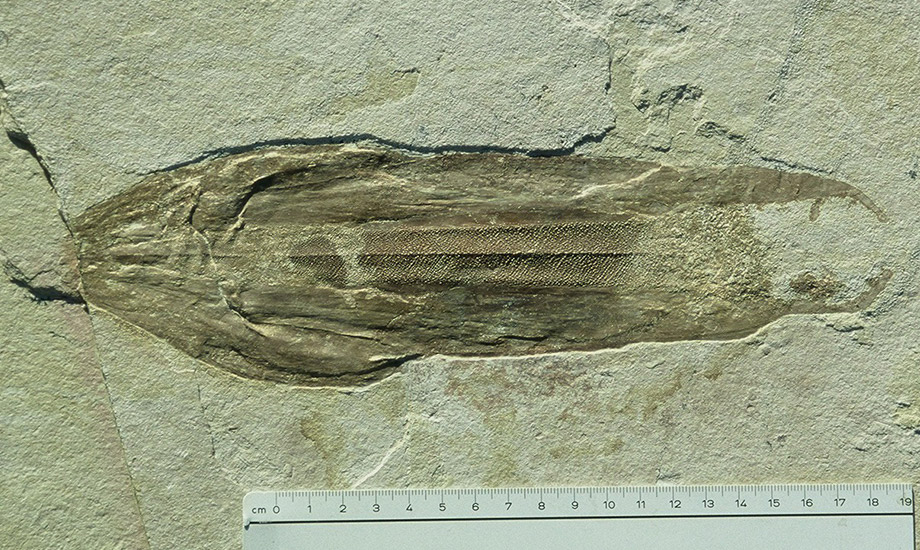 © Günter SchweigertSquid with conserved tissue (finds with conserved tissue must be reported).
© Günter SchweigertSquid with conserved tissue (finds with conserved tissue must be reported). -
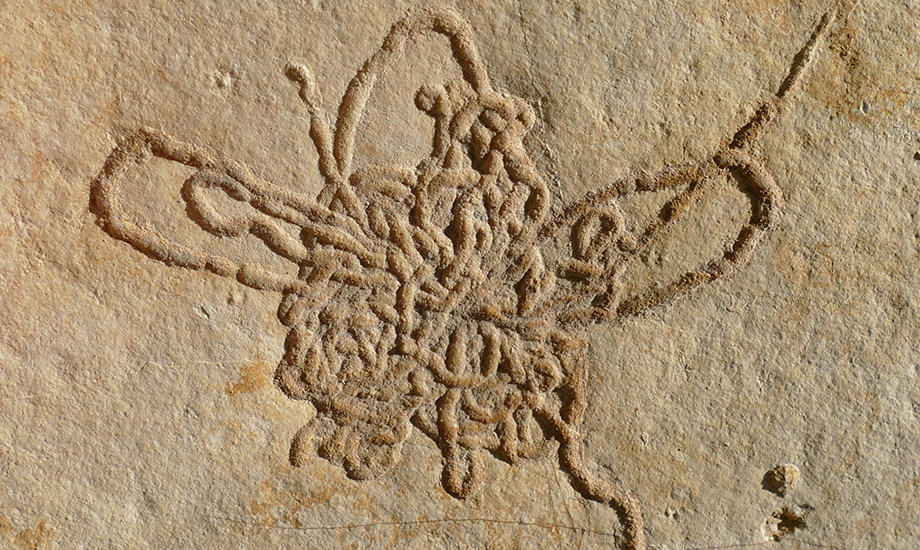 © Günter SchweigertAmmonite fecal cord (lumbricaria intestinatum)
© Günter SchweigertAmmonite fecal cord (lumbricaria intestinatum) -
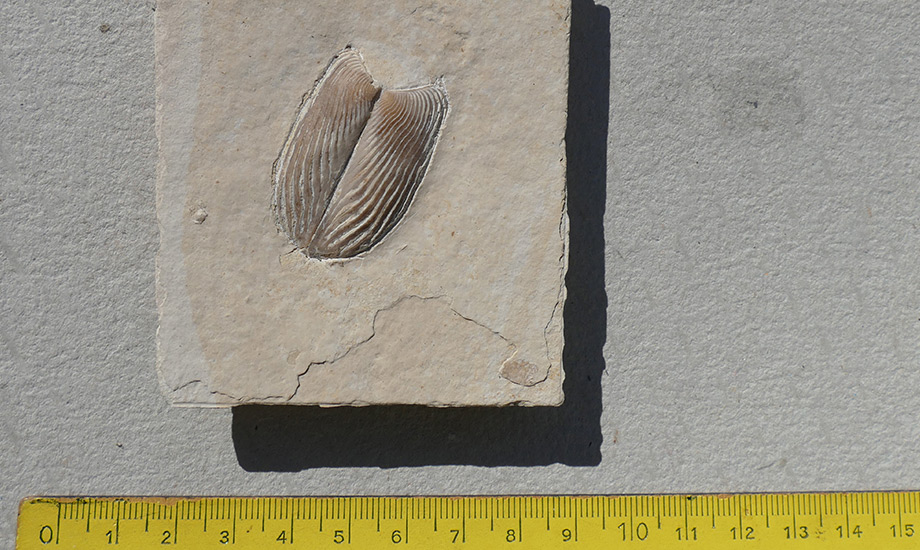 © Günter SchweigertPart of an ammonite (lamellaptychus). It is interpreted as part of the jaw.
© Günter SchweigertPart of an ammonite (lamellaptychus). It is interpreted as part of the jaw. -
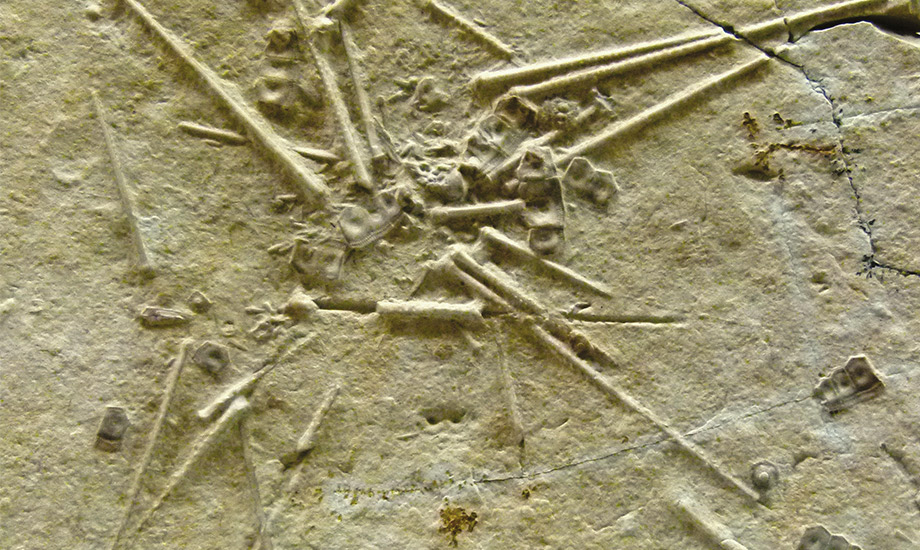 © Günter SchweigertSea urchins with spines (finds of echinoderms such as sea urchins or crinoids should be reported).
© Günter SchweigertSea urchins with spines (finds of echinoderms such as sea urchins or crinoids should be reported). -
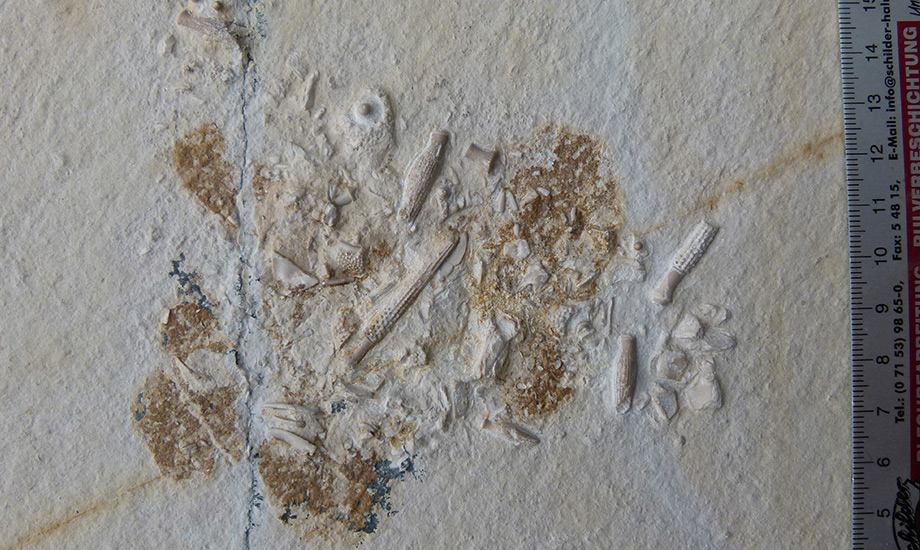 © Günter SchweigertSpit balls with recognizable sea urchin remains (such exceptional finds are very valuable for science and should always be reported).
© Günter SchweigertSpit balls with recognizable sea urchin remains (such exceptional finds are very valuable for science and should always be reported). -
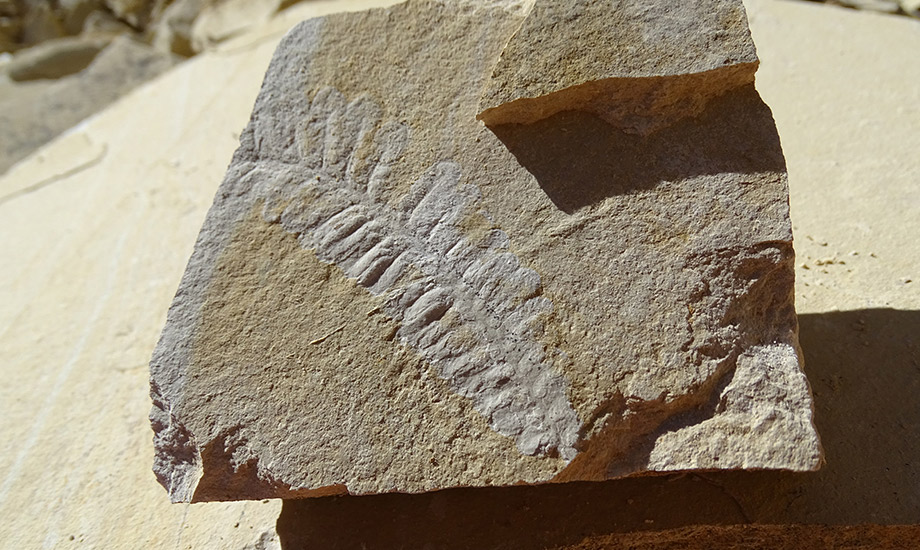 © Günter SchweigertLand plant (finds of fossil land plants are to be reported).
© Günter SchweigertLand plant (finds of fossil land plants are to be reported). -
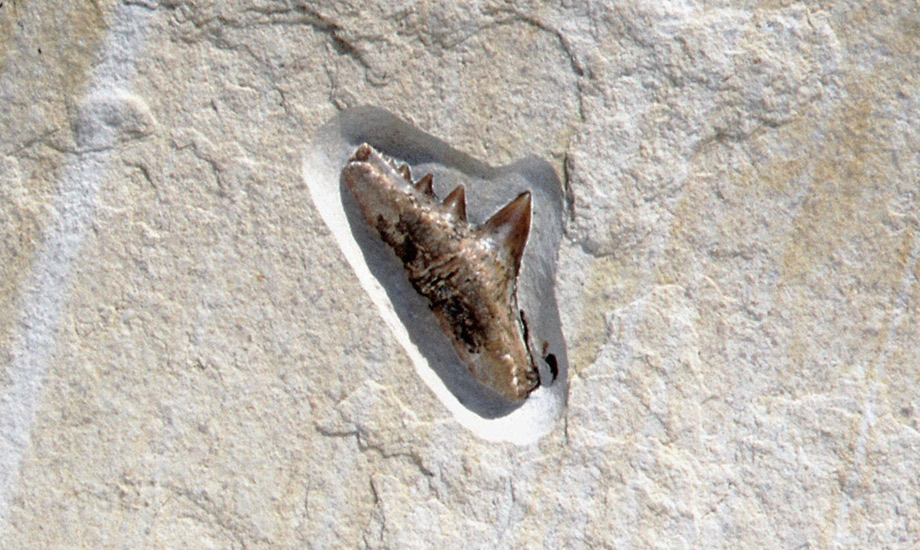 © Günter SchweigertShark tooth
© Günter SchweigertShark tooth -
 © Guenter SchweigertAngel shark. One of the most famous fossils of Nusplingen.
© Guenter SchweigertAngel shark. One of the most famous fossils of Nusplingen.
